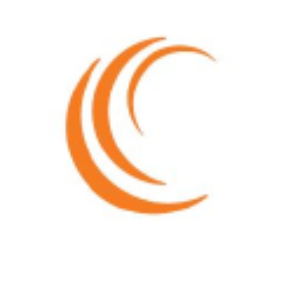FDA Grants Soligenix Orphan Drug Designation for the Prevention and Post-Exposure Prophylaxis Against Sudan Ebolavirus Infection
Provides SuVax™ Heat Stable Vaccine Seven Years of U.S. Market Exclusivity Upon FDA Approval
The
"SuVax™ is based on our novel vaccine platform which includes three major components: a robust protein manufacturing process that has been demonstrated on multiple protein antigens, a novel nano-emulsion adjuvant which induces broad immunity, and a formulation procedure which enables thermostabilization of the combination of adjuvant and antigen in a single vial," stated Oreola Donini, PhD, Senior Vice President and Chief Scientific Officer of Soligenix. "The SuVax™ vaccine specifically addresses the potentially lethal Sudan Virus Disease, caused by SUDV. SUDV is a type of ebolavirus for which there is no current treatment or vaccine. The SuVax™ vaccine has demonstrated
About SuVax™
SuVax™ is a subunit protein vaccine of recombinantly expressed Sudan Ebola virus glycoprotein, developed in partnership with Dr. Axel Lehrer at the University of Hawaiʽi at Mānoa. The vaccine includes a protein found on the surface of
Manufacture of the recombinant protein utilized in SuVax™ utilizes a robust protein manufacturing process, developed and tested in other subunit vaccines advanced through clinical testing. Similarly, the selected adjuvant, while novel, has also been independently tested in Phase 1 and Phase 2 clinical studies. SuVax™ can also be expressed as part of a multivalent vaccine, in combination with antigens against Marburg marburgvirus (MARV) for example.
About
Ebola-like disease can be caused by one of six species of Ebolavirus, four of which are known to cause disease in humans, including its best-known member,
Transmission of filoviruses requires direct contact with bodily fluids from an infected person or contact with infected animals. The mortality rates following filovirus infections are extremely high, and, in the absence of wide availability of effective therapeutics, are affected by the quality of supportive care available with a focus on early initiation of treatment. Resolution of the disease largely depends on the patient's own immune system. While there are limited treatment options for disease caused by EBOV, there are no available treatments or vaccines available for Sudan Virus Disease. The approved vaccines for EBOV utilize a viral vector approach which has contraindications for some individuals and require stringent, ultra-low cold-chain storage, inhibiting their broad use in challenging conditions where power supply can be uncertain and ambient temperature can be very high.
About Soligenix, Inc.
Soligenix is a late-stage biopharmaceutical company focused on developing and commercializing products to treat rare diseases where there is an unmet medical need. Our Specialized BioTherapeutics business segment is developing and moving toward potential commercialization of HyBryte™ (SGX301 or synthetic hypericin sodium) as a novel photodynamic therapy utilizing safe visible light for the treatment of cutaneous T-cell lymphoma (CTCL). With successful completion of the second Phase 3 study, regulatory approvals will be sought to support potential commercialization worldwide. Development programs in this business segment also include expansion of synthetic hypericin (SGX302) into psoriasis, our first-in-class innate defense regulator (IDR) technology, dusquetide (SGX942) for the treatment of inflammatory diseases, including oral mucositis in head and neck cancer, and (SGX945) in Behçet's Disease.
Our Public Health Solutions business segment includes development programs for RiVax®, our ricin toxin vaccine candidate, as well as our vaccine programs targeting filoviruses (such as Marburg and Ebola) and CiVax™, our vaccine candidate for the prevention of COVID-19 (caused by SARS-CoV-2). The development of our vaccine programs incorporates the use of our proprietary heat stabilization platform technology, known as ThermoVax®. To date, this business segment has been supported with government grant and contract funding from the National Institute of Allergy and Infectious Diseases (NIAID), the Defense Threat Reduction Agency (DTRA) and the Biomedical Advanced Research and Development Authority (BARDA).
For further information regarding Soligenix, Inc., please visit the Company's website at https://www.soligenix.com and follow us on LinkedIn and Twitter at @Soligenix_Inc.
This press release may contain forward-looking statements that reflect Soligenix, Inc.'s current expectations about its future results, performance, prospects and opportunities, including but not limited to, potential market sizes, patient populations and clinical trial enrollment. Statements that are not historical facts, such as "anticipates," "estimates," "believes," "hopes," "intends," "plans," "expects," "goal," "may," "suggest," "will," "potential," or similar expressions, are forward-looking statements. These statements are subject to a number of risks, uncertainties and other factors that could cause actual events or results in future periods to differ materially from what is expressed in, or implied by, these statements, and include the expected amount and use of proceeds from the offering and the expected closing date of the offering. Soligenix cannot assure you that it will be able to successfully develop, achieve regulatory approval for or commercialize products based on its technologies, particularly in light of the significant uncertainty inherent in developing therapeutics and vaccines against bioterror threats, conducting preclinical and clinical trials of therapeutics and vaccines, obtaining regulatory approvals and manufacturing therapeutics and vaccines, that product development and commercialization efforts will not be reduced or discontinued due to difficulties or delays in clinical trials or due to lack of progress or positive results from research and development efforts, that it will be able to successfully obtain any further funding to support product development and commercialization efforts, including grants and awards, maintain its existing grants which are subject to performance requirements, enter into any biodefense procurement contracts with the
![]() View original content:https://www.prnewswire.com/news-releases/fda-grants-soligenix-orphan-drug-designation-for-the-prevention-and-post-exposure-prophylaxis-against-sudan-ebolavirus-infection-302113685.html
View original content:https://www.prnewswire.com/news-releases/fda-grants-soligenix-orphan-drug-designation-for-the-prevention-and-post-exposure-prophylaxis-against-sudan-ebolavirus-infection-302113685.html
SOURCE Soligenix







